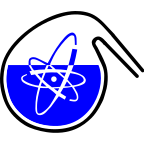Speaker
Description
Because of their characteristic properties, room temperature ionic liquids (RTILs) are considered to be suitable alternatives to presently used systems in the field of spent fuel reprocessing and decontamination/recycling of materials contaminated with radionuclides. Electrochemical separations from RTILs are highlighted processes in the field and Co is one of the most common contaminants during recycling of material coming from many industrial processes. 1-ethyl-3-methylimidazolium bis(trifluoromethylsulfonyl)imide ([EMI][NTf2]) was chosen as a carrier system in the recycling scheme for Co-contaminated material because of its hydrophobicity, satisfactory solubility of the most Co compounds and sufficient electrochemical window.
Both chemistry and electrochemistry of Co in [EMI][NTf2] was studied. Chemical forms of Co in the solution are discussed as well as the mechanism of electrochemical reduction of Co(II) ions and possibilities of the Co deposition on the solid electrode. It was shown that even high lattice energy Co compounds can be dissolved in [EMI][NTf2]. However, if Cl- ions are present in the system, complexes with mixed ligands appear and certain concentration is needed to form complex reducible to the pure metal. Metal Co deposits were subsequently obtained and its characterization is presented as well.

